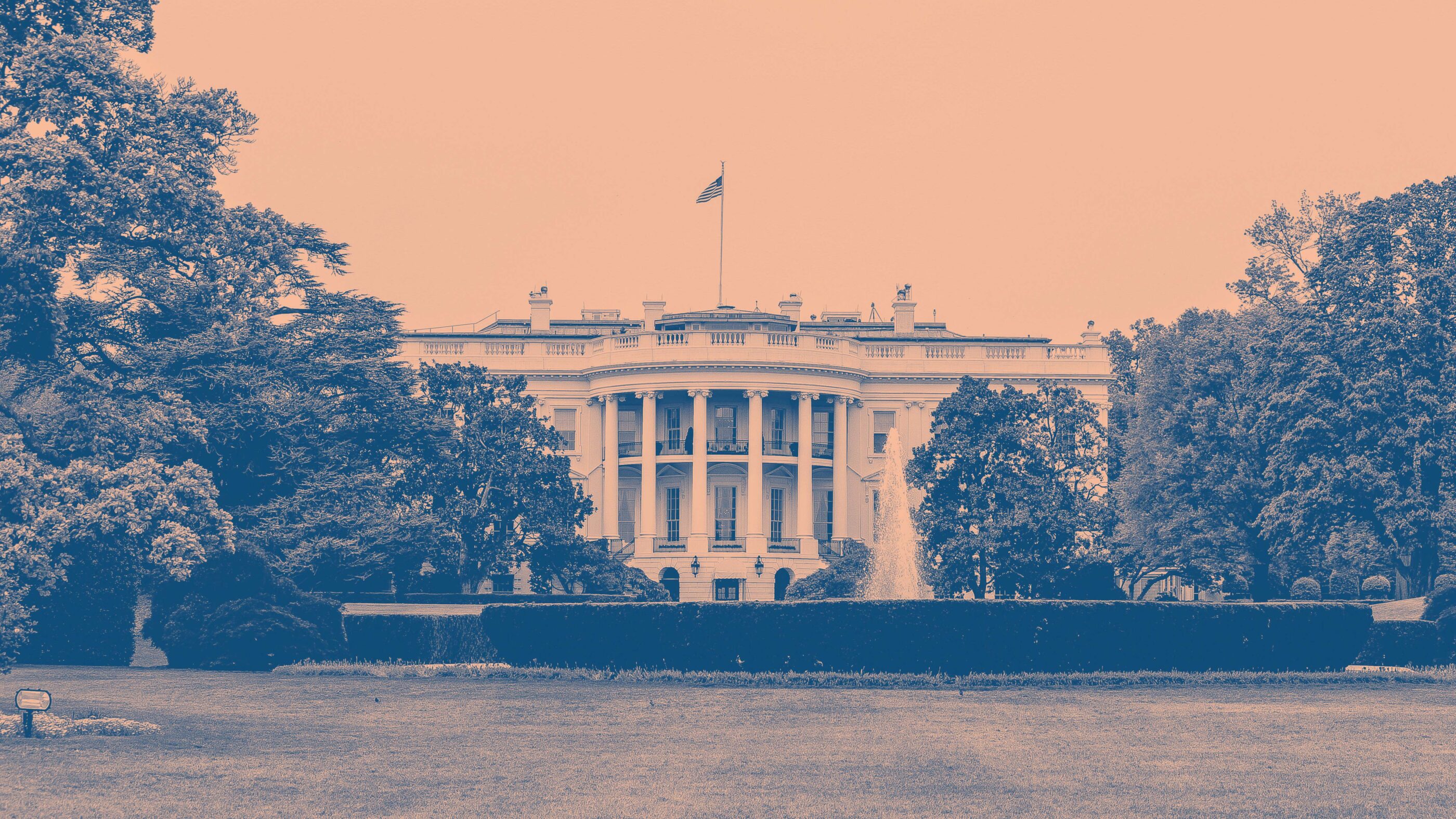
The first 100 days set the tone for a president’s second term, and the administration must be ready to hit the ground running. The transition team should focus on preparing for this period by identifying the best opportunities for the administration to achieve its goals through legislation, strategic partnerships, and management and budget policies.
A STEP team will mimic many of the duties of a first-term transition team, including personnel support and the development of implementation plans for the first hundred days. Like a first-term transition team, its work should operate in parallel with, but separate from, the campaign. Campaign leadership will run on policy priorities and proposals, which should guide the transition team’s work. The STEP operation is not a policy shop. Instead, it should offer policy implementation options that the future administration could use to achieve the campaign’s goals.
The STEP operation is not a policy shop. Instead, it should offer policy implementation options that the future administration could use to achieve the campaign’s goals.
The shift to a second term allows a transition team to build on practices that worked well during the first four years and find areas to improve in the second four years. The STEP team should be given access to review organizational charts and workflows across the White House and agencies. Ultimately, it should offer two types of support: first, an analysis of first-term successes and lessons learned; and second, a menu of management and policy implementation recommendations to enact the agenda dictated by the White House and the campaign.
To fulfill its mission, the transition team should engage in the following activities:
Determine goals and work backwards
The first priority for the STEP team should be to coordinate with the White House to determine its goals, mission and timetable. What processes and decisions should be made by Election Day and by a second inauguration? Like a transition team planning for a first term, the STEP team should have a clear mandate from leadership. The STEP team may be effective in helping think about personnel retention, policy planning, decision-making processes or other important management priorities.
The STEP team will be of most value if it is able to start early and has a clear expectation about its goals and timetable.
Review first-term management and implementation
To offer credible and realistic recommendations for a second term, the STEP team must gain a full picture of management and policy implementation in the first term. This process can be modeled off a first-term agency review team. An expert affiliated with the STEP team, perhaps a trusted official who has departed the administration, can review decision-making processes and coordination mechanisms, and make recommendations on new roles or governance structures to improve upon existing efforts. The White House can use required transition processes to support checkpoint briefings with agency leadership.
By law, agencies must create comprehensive resources and briefings ahead of every presidential election in case a new administration wins the election and takes over the White House. During years when an incumbent wins re-election, these resources often go unread and unused. Instead, these briefings can be a foundation to discuss how agencies can best advance the president’s second-term priorities and campaign promises.
The memos created by White House offices, like the policy councils and task forces, in the last year of a first term could also provide critical information for the STEP team’s recommendations. After leaving office, President George W. Bush’s national security advisor, Stephen Hadley, obtained declassification of the memos written by the National Security Council staff under his watch in 2008. In 2023, Hadley published an assessment of whether the actions and advice in those memos had adequately prepared the next president for the challenges facing the U.S. government. As part of its work in the last year of a first term, one role for the STEP team could be to use the memos prepared by White House offices to complement the information provided by agency briefings and provide a full picture of recommendations for a second term.
Review personnel and prepare for appointee turnover
An incumbent president has the opportunity to create substantial continuity in leadership across federal departments and agencies. Furthermore, the existing political leadership team in place has had the opportunity to build trust with an empowered and engaged career workforce and nurture strong connections between the two at every agency.
However, all recent two-term administrations faced significant turnover among top-level White House personnel and other high-level positions between their first and second term. The months leading up to re-election can be particularly exhausting for agency leaders as they race to complete priorities, prepare for the possibility of transition and manage surprises and crises. On average, nearly half of top agency leaders resign within six months of a second term’s start. In the last three two-term administrations, 76% of the top Senate-confirmed political appointees served for less than four years, with an average tenure of three years.
On average, nearly half of top agency leaders resign within six months of a second term’s start. In the last three two-term administrations, 76% of the top Senate-confirmed political appointees served for less than four years, with an average tenure of three years.
Some recent administrations have adopted a norm that all political appointees should not expect reappointment at the start of the second term and should therefore tender a resignation. There are no official rules requiring such letters. Those administrations chose this strategy to allow a president to nominate new individuals for roles in which they would like to see turnover without having the difficult conversation of asking for a resignation.
The Obama administration was deliberate about evaluating and retaining personnel as they approached re-election. During the summer of 2012, the Office of Presidential Personnel, agency leadership and White House liaisons reviewed political appointees to identify top performers, places where changes should be made and how to keep top performers engaged. White House liaisons worked with agency leadership to incentivize appointees to stay while building a culture where experienced appointees could request new placements.
Early work on replacement nominees will ease the turnover process later on. For example, because the Obama administration knew Treasury Secretary Timothy Geithner intended to leave early in 2013, they were able to announce a replacement nomination with his resignation. The president also asked Deputy Secretary Neal Wolin to stay on for an additional six months to ease the transition process.
High turnover and the resulting loss of institutional knowledge can force new appointees to relearn the lessons of previous occupants and risk slowing down implementation efforts. A STEP team can help an incumbent administration manage the balance between injecting fresh energy where appropriate and retaining experienced leadership.
Partner with the Office of Presidential Personnel and agencies to retain top appointees
Many political appointees admit to exhaustion at the end of a first term, but there are at least three reasons that administration leaders should take deliberate steps to retain top performers. First, current leaders have up-to-date knowledge about the challenges facing their agency and can get off to a fast start. Second, existing leaders have developed relationships and trust with senior career executives that are necessary to manage agency business well. Third, the increasing delays in the Senate confirmation process make it even more difficult to fill vacancies in a second term.
The White House should direct and empower Cabinet secretaries to organize such outreach and coordinate with the Office of Presidential Personnel on how to keep top performers engaged, whether in their current roles or more senior ones. PPO can also offer high-performing appointees opportunities to move between agencies to keep them engaged. Re-election campaign staff may also wish to take on roles in the administration post-election and should be considered in the lists of those up for promotion or reassignment.
| Reasons administration leaders should take steps to retain top performers: |
- Current leaders have up-to-date knowledge about the challenges facing their agency.
- Existing leaders have developed relationships and trust with senior career executives that are necessary to manage agency business well.
- The increasing delays in the Senate confirmation process make it even more difficult to fill vacancies in a second term.
|
Maintaining direct contact with agency leadership is vital to this process. Many political appointee positions fall within Cabinet agencies and subcomponents, and agency leaders are best positioned to have conversations with individual appointees about continuing in the administration for a second term. The STEP team can support this work by organizing feedback from agency leaders about retention opportunities. It will be important for White House sponsors to set the tone that the STEP team exists to support a strong team across government without regard to STEP members’ personal placement in a second term.
A STEP team can help an already busy personnel office handle the inevitable surge in turnover around re-election. In addition to organizing feedback from agencies, the STEP team can provide additional capacity to PPO in organizing opportunities to move personnel across agencies or supporting efforts to vet new appointees.
In the last transition cycle, congressional appropriators recommended an additional amount of funding for PPO to help recruit, vet and nominate candidates for senior positions. This led to surge funding for PPO that increased its capacity in 2021. The Partnership recommends that Congress continue this approach for 2025 and future transition cycles, and such funding should be available to new and second-term administrations alike. Even absent that additional support, a STEP team can help organize feedback from departments and agencies or support vetting for new candidates.
Under the Presidential Transition Act, funds provided by Congress for appointee orientation are available even to a re-elected incumbent. In recent transition cycles, Congress has provided $1 million in appointee orientation funds.
More information on the appointment process can be found in the Presidential Transition Guide produced by the Partnership and BCG. The Partnership’s “Ready To” resources can also help appointees prepare for their new roles and execute them responsibly.
Prepare signature legislation to prioritize for bipartisan support
The weeks following a re-election victory may provide an incumbent a boost in popularity. However, any such boost is likely to dissipate as history has shown recent second-term administrations have faced challenging political headwinds. Therefore, transition teams must plan to move quickly since the first weeks of a second term likely present the best possible opportunity for leading major bipartisan action.
Bipartisan cooperation is essential for any second-term president who hopes to leave a lasting legacy. An analysis by former Trump White House aide Chris Liddell found that few significant pieces of legislation have passed during a president’s fifth year. A more hostile Congress—along with a lack of legislative planning during fourth years—have contributed to this legislative drought.
Bipartisan cooperation is difficult, especially in today’s polarized environment. However, as Liddell and others have argued, bipartisan legislation can create a more lasting legacy than executive action alone. Furthermore, agenda items that can be addressed with quick executive actions have likely already been dealt with in the first term.
Build off the first-term President’s Management Agenda to invest in improved government operations
During transition planning for a first term, a new president’s team has invested the time and energy to define its management goals for the federal government, with the White House normally issuing its President’s Management Agenda during the first year in office. After four years of managing the government, an incumbent team has a better understanding of the complex issues that require the elevation, focus and whole of government approach that a PMA provides.
The planning phase for a second term is an ideal time to take a close look at the successes from the first PMA and prioritize what issues require cross-agency coordination and attention from senior leaders. A PMA provides a mechanism for agencies to work across barriers to tackle challenges in a transparent and accountable way.
Leaders of a second-term planning team should seize this opportunity to refine the goals, activities and reporting mechanisms. Because they have the benefit of being able to assess how the agenda was enacted during the first term, they can build on that work to make a second term even stronger. Broadly speaking, a management agenda should do the following:
 |
Link management priorities such as IT, data and workforce modernization to the successful execution of policy objectives. |
 |
Recognize management experience as a key requirement in selecting appointees. |
 |
Strengthen the capacity of the federal government to achieve mission objectives. |
 |
Promote interagency collaboration, especially through established forums such as the President’s Management Council. |
 |
Encourage innovation to improve outcomes and productivity, including new ways of doing business, greater use of technology and delivering better customer experiences. |
 |
Articulate a defined approach to decision-making within agencies and between agencies and the White House that covers routine decisions, new initiatives and unanticipated events. |
 |
Reduce the risk of operational and policy implementation failures. |
Identify new partnership opportunities to achieve policy goals
Each modern White House is organized to build relationships with state, local and tribal governments; Congress; interest and affinity groups; business coalitions and industry task forces; and other important interests. Changes in the external environment, such as new party control in Congress, can lead an administration to shift focus in how it builds support and implementation plans for its agenda. When explaining this strategic shift, one Obama official described their first term as focused on achievements in Congress—such as the passage of the Affordable Care Act—while the second-term team pivoted to expand planning efforts with state, local and tribal governments. That official credited senior administration staff for selecting personnel who understood how local priorities might align with the administration’s agenda for its second term.
There are two main benefits to reviewing partnership opportunities in a second term. First, new engagement strategies can help an administration enact positive change without relying on uncertain action from Congress. Second, if a first-term administration can identify which strategies and methods of communications were most successful with certain external partners, it can extend those strategies across others and strengthen its overall engagement with groups representing the country broadly.
Support transition planning for potential change of administration
In addition to planning for a second term, an incumbent White House must fulfill its obligations to plan for a potential administration change. The foundation of a seamless transition is early and comprehensive planning, which is not only a best practice, but a statutory requirement. This requires the incumbent administration to prepare detailed agency briefing materials, ensure clear succession plans are in place and facilitate a smooth transfer of knowledge to a potential incoming administration. In addition to fulfilling the legal obligations and responsibilities for continuity to a new team, these materials can be used to evaluate first-term successes, determine where current programs stand and support planning for potential personnel retention. For more details, see the Presidential Transition Guide.










